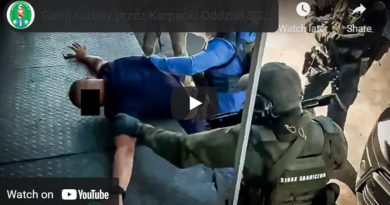Opinion: The battle against drug traffickers is an ever-evolving challenge
Jim Ryan is CEO of Viken Detection a private Massachusetts-based company that designs and manufactures weapons, chemical and narcotics screening solutions to both government and private industry
The battle against drug traffickers is an ever-evolving challenge that requires technological innovation and adaptation. As cartels continue to exploit hard-to-inspect concealment areas to traffic illicit drugs across the southern border, it becomes evident that legacy top-down passenger vehicle X-ray scanning systems are no longer effective. To stay ahead of these criminals, it is imperative that our government embrace cutting-edge detection technology, such as under-vehicle X-ray scanning systems that use X-ray backscatter and transmission technology to scan the underside of a passenger vehicle.
According to an analysis of U.S. government data, fentanyl overdoses have surged to the leading cause of death for adults between the ages of 18 and 45. Between 2020 and 2021, nearly 79,000 people between 18 and 45 years old died of fentanyl overdoses. That’s more than COVID-19, motor vehicle accidents, cancer and suicide combined in 2020.
Traditionally, border security measures have relied on top-down X-ray systems that offer a limited view of passenger vehicles passing through border checkpoints. However, this paradigm needs to literally be turned upside down in order to allow border agents to comprehensively inspect the entire vehicle – from the underside. Under-vehicle X-ray enables fast and reliable comprehensive inspections that require less time and effort, results in fewer damaged vehicles and lessens the chances of exposure to dangerous toxins, such as fentanyl, by an inspection officer.
The advantages of these modern passenger-vehicle X-ray imaging solutions are numerous. Firstly, by orienting X-rays at the most difficult-to-inspect concealment areas, such as exhaust systems, drive shafts, bumpers, frame rails, and tires, under-vehicle scanners effectively address primary areas predominantly exploited by drug traffickers. By aiming low-energy X-rays at the under-vehicle, detection capabilities are significantly enhanced thus minimizing the risk of contraband slipping through undetected.
Moreover, the clear and complementary backscatter and transmission images that are generated from under-vehicle scanning technology provides inspection officers with superior detection capability compared to traditional top-down systems. Every day, inspection officers must contend with harmless “clutter” in vehicles, things like groceries, tools, and bags of clothing most people pack in their cars and small trucks when crossing the border. With top-down X-ray, this clutter shows up in the X-ray image as dark, opaque areas that the inspection officer cannot see through.
Bad actors know this and will conceal contraband in these areas. With under-vehicle X-ray systems, clutter is not an issue as the X-ray images are viewed from the bottom of the vehicle where clutter is not present. Additionally, these underside images enable effective ‘operator-assist’ detection tools and provides the foundation for the eventual implementation of fully automated threat detection (ATR) software, assisting the inspection officer with the detection of actual threats and contraband. The combination of an inspector’s detection experience and the cutting-edge tools they are given, can create a powerful barrier against drug traffickers’ evolving tactics.
Another critical aspect is the safety of occupants during vehicle scanning. While some may have concerns about radiation exposure, the dosage to vehicle occupants, specifically for under-vehicle configurations is much lower than “optimal” levels set by Customs and Border Protection (CBP). The added protection from the under-vehicle material of a passenger vehicle and the low-energy X-ray source located several feet underground makes these systems comparatively safer than traditional top-down methods that start X-raying from the top of vehicles.
Our policymakers need to seize the opportunity to invest in and implement these innovative solutions, fortifying our borders against evolving threats and ensuring a safer and more secure future for our communities. Adopting new technology, such as Viken’s Osprey, requires new thinking from the government, from operations to acquisitions.
The collaboration between government agencies, private companies, and research institutions must seek to adopt new and better technology as bad actors will find ways to smuggle contraband across our borders and into the hands of our children. Policymakers need to adequately fund new and better technology to ensure border security remains a top priority.




